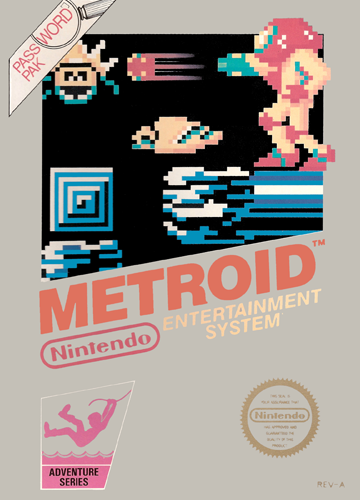

Metroid, released in 1986 for the Nintendo Entertainment System (NES), is a groundbreaking game that introduced players to a vast and immersive sci-fi world. Developed by Nintendo R&D1 and designed by Yoshio Sakamoto, Metroid has become a cult classic and a foundational title in the platformer and action-adventure genres. Let's dive into this legendary game and explore the reasons why it continues to captivate gamers to this day.
Year: 1986
Manufacturer: Nintendo
Genre: Adventure
Rating: HSRS - GA (General Audience)
Gameplay:
Metroid's gameplay revolves around exploration and action, setting it apart from many other games of its time. Players assume the role of Samus Aran, a galactic bounty hunter equipped with a power suit, as they navigate through the labyrinthine corridors of the planet Zebes. The nonlinear nature of the game provides a sense of freedom and discovery rarely seen at the time.
As you progress, you'll encounter a variety of enemies, each requiring different strategies to defeat. The game's difficulty gradually increases as you delve deeper into Zebes, with challenging boss battles that test your skills and reflexes. Along the way, you'll acquire new power-ups, such as missiles and high jumps, that enhance your abilities and grant access to previously unreachable areas. This sense of progression and empowerment is one of Metroid's most satisfying aspects.
Story and Atmosphere:
Metroid weaves an intriguing sci-fi narrative through its gameplay. While the NES's limitations prevent extensive storytelling, the game manages to create a compelling atmosphere through its eerie music, detailed sprite work, and foreboding environments. The sense of isolation and mystery is palpable as you uncover the secrets of the planet and Samus's own identity, culminating in a surprising twist.
Graphics and Sound:
Considering the hardware limitations of the NES, Metroid's visuals are impressive. The backgrounds and sprites are detailed and convey a sense of depth despite the console's limited color palette. The alien environments of Zebes are diverse and immersive, from the claustrophobic tunnels to the towering caverns.
The atmospheric soundtrack, composed by Hirokazu Tanaka, adds another layer of immersion to the game. The iconic Metroid theme and the haunting melodies heighten the tension and make exploration all the more engaging. The sound effects, while simple, effectively convey the sense of danger and excitement.
Legacy and Impact:
Metroid's impact on the gaming industry cannot be overstated. It pioneered the concept of exploration-driven gameplay, laying the foundation for the Metroidvania genre that continues to thrive today. Its non-linear structure and hidden secrets inspired countless games, including the beloved Castlevania: Symphony of the Night.
Metroid's success also paved the way for a long-running franchise, with sequels and spin-offs spanning multiple Nintendo consoles. The character of Samus Aran, one of gaming's most iconic heroines, owes her popularity to the original Metroid.

Conclusion:
Metroid for the NES remains a timeless classic that has stood the test of time. Its groundbreaking gameplay, atmospheric world, and iconic protagonist continue to captivate gamers even decades after its release. If you're a fan of exploration, action, and sci-fi, experiencing the origins of the Metroid series is an absolute must. Don your power suit, prepare for adventure, and embark on an unforgettable journey through the dark and mysterious depths of Zebes.
Explore in-depth reviews and analyses of classic Nintendo Entertainment System (NES) games, including gameplay mechanics, graphics, sound, and overall nostalgic experience.